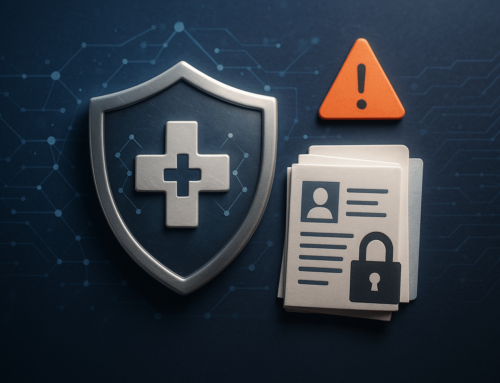
Cybersecurity incidents have become an unfortunate reality for healthcare organizations – from data breaches to malware attacks, the threat landscape is constantly evolving. That is why having a well-defined incident response process is crucial to minimize damage and swiftly mitigate potential risks. Let’s delve into the 6 steps of incident response that are crucial to this process.
The 6 Steps of Incident Response: A Proactive Guide to Tackling Incidents Head-On
To effectively handle and mitigate incidents, it is crucial for organizations to have a well-defined incident response plan consisting of six key steps.
1. Preparation: Building a Robust Defense
Before an incident occurs, it’s vital to establish a solid foundation by developing a comprehensive incident response plan. This involves assembling an experienced team with clearly defined roles and responsibilities. The team should include representatives from various departments, such as:
- IT Security
- Legal
- Public Relations
- Executive Management
Additionally, identifying potential threats and vulnerabilities through risk assessments helps to proactively strengthen your organization’s defenses.
2. Identification: Detecting the Breach
Detecting an incident early on significantly limits its impact. Implementing robust monitoring systems that can regularly scan for anomalies or suspicious activities is crucial. These systems include:
- Intrusion Detection Systems
- Firewalls
- Antivirus Software
- Security Information & Event Management Tools
Timely identification allows for a swift response, minimizing potential damage.
3. Containment: Isolating the Threat
Once an incident has been identified, it’s essential to contain it promptly to prevent further spread within your network environment. This involves isolating affected systems or devices from the rest of the network while preserving evidence for forensic analysis. By segmenting networks and disabling compromised accounts or services, you can limit the extent of the breach and protect critical assets.
4. Eradication: Eliminating the Root Cause
After containing the incident, the focus shifts toward eradicating the root cause behind the breach. This step often requires conducting a thorough investigation to determine how the incident occurred and what vulnerabilities were exploited. It may involve:
- Patching Vulnerable Systems
- Removing Malicious Code or Malware
- Strengthening Security Measures
Implementing these tactics can help prevent similar incidents from happening in the future.
5. Recovery: Restoring Normal Operations
Once the threat has been eradicated, it’s time to restore affected systems and services to their normal state. This may involve:
- Reinstalling Software
- Restoring Backups
- Rebuilding Compromised Infrastructure
It’s crucial to ensure that restored systems have undergone rigorous testing to eliminate residual vulnerabilities before returning them to production environments.
6. Lessons Learned: Improving for the Future
The final step of the incident response process involves learning from the incident and continuously improving your organization’s security posture. Conducting a thorough post-incident review helps identify areas where the response could be enhanced or new safeguards implemented. Sharing lessons learned with the broader cybersecurity community also contributes to collective knowledge and resilience against future threats.
The Final Step of Incident Response Process: Continuous Adaptation
While these six steps provide a structured framework for incident response, it’s important to remember that incident response is an ongoing process rather than a one-time event. As cyber threats evolve, organizations must continuously adapt their strategies and defenses to stay one step ahead of malicious actors.
By investing in employee training programs, staying up-to-date with emerging threats, and regularly reviewing and updating incident response plans, organizations can effectively enhance their ability to detect, respond to, and recover from cybersecurity incidents.
Compliancy Group offers a robust incident management solution that makes it easy to track and manage incident response. Easily identify organizational risks from incident reports to improve your compliance efforts and prevent future incidents. Our software supports the reporting of all types of incidents and allows you to create custom events.









